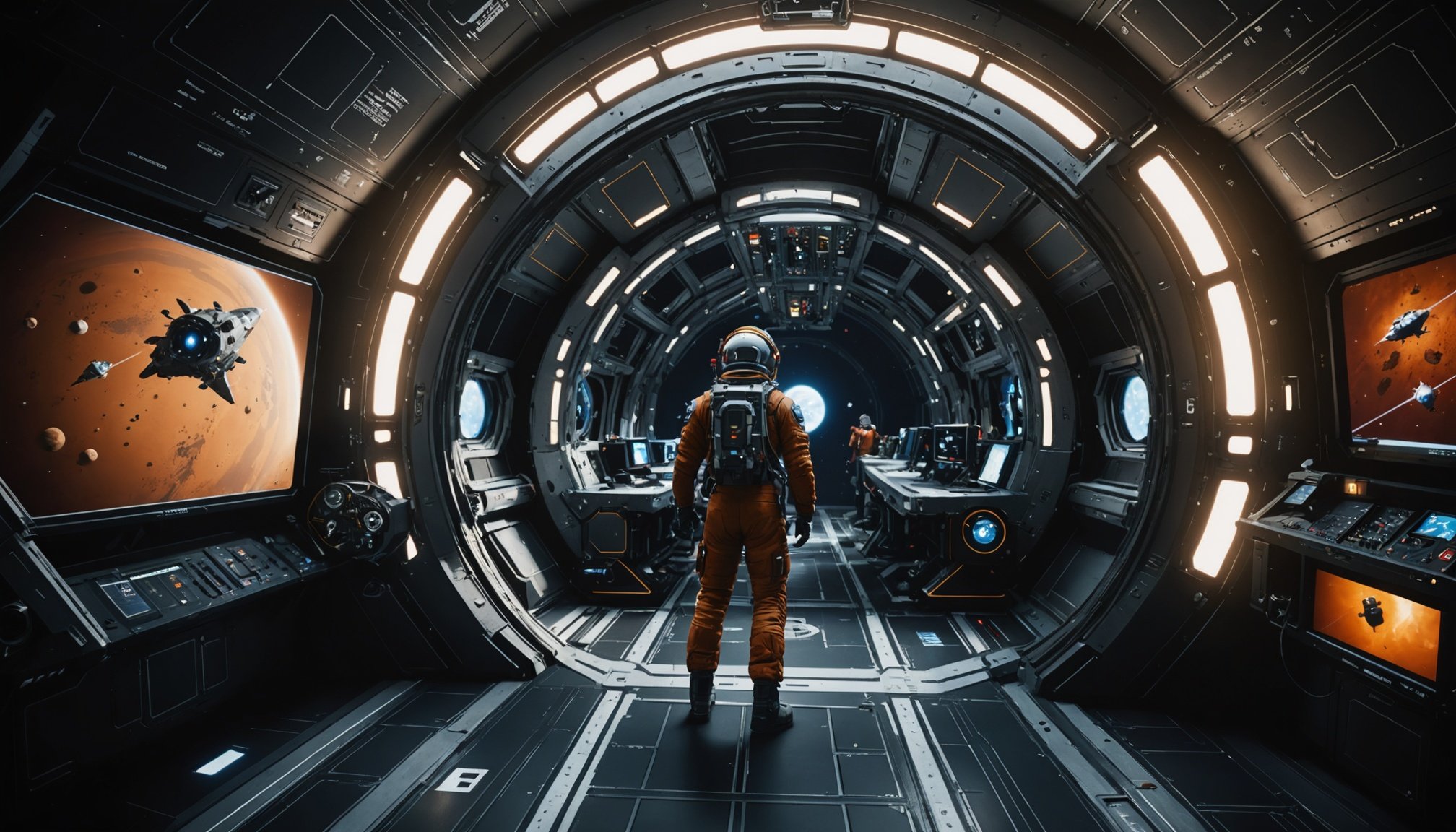Understanding Real-Time Ray Tracing
Real-time ray tracing is a revolutionary gaming technology that simulates the behavior of light to create visual fidelity unparalleled in traditional gaming experiences. Ray tracing principles hinge on mimicking real-world physics by tracing the path of light rays as they interact with objects, surfaces, and materials. This method allows for the creation of incredibly realistic lighting effects, reflections, and shadows.
In contrast, traditional rendering techniques, such as rasterization, rely on approximations to simulate these effects. Rasterization processes graphics more rapidly but often sacrifices some visual detail. While adequate for rendering fast-paced games, it lacks the authentic lighting dynamics that ray tracing can achieve.
This might interest you : Unlocking the future: innovative approaches to seamless voice recognition integration in narrative-driven video games
The importance of visual fidelity in gaming cannot be overstated. It enhances the immersive experience, drawing players deeper into virtual worlds by offering more lifelike environments. Real-time ray tracing elevates this experience, providing gamers with high-definition graphics that mirror the complexity and subtleties of real-world environments.
Real-time ray tracing has faced challenges, primarily concerning hardware requirements, as it demands significant processing power to deliver seamless performance. However, advancements in gaming technology continue to make this cutting-edge technology more accessible to a broader audience, reshaping the future of gaming.
Additional reading : Revolutionizing gaming experience: harnessing ai for dynamic real-time lighting adjustments in games
Application of Ray Tracing in Space Exploration Games
In the realm of space exploration gaming, ray tracing has emerged as a pivotal technology, revolutionising game development. This advanced rendering technique meticulously traces the path of light, simulating real-life optical effects, such as shadows and reflections, thereby providing gamers with truly immersive experiences. It enables deeper visual realism by replicating natural phenomena like light bending and interaction, adding layers of authenticity to cosmic environments.
Game development faces unique challenges when implementing ray tracing, particularly in vast and scalable space environments. Developers must navigate the computational intensity of ray tracing, balancing performance with aesthetic fidelity. This often involves optimising game engines to manage the increased demand on system resources, ensuring smooth gameplay without sacrificing the visual grandeur.
Despite these challenges, the advantages of ray tracing in space exploration games cannot be overstated. It heightens immersion by casting dynamic shadows and reflections off planetary surfaces and spacecraft hulls, creating an unparalleled visual spectacle. The technique enriches the player’s experience by transforming static, artificial settings into living, breathing worlds.
Overall, as ray tracing technology continues to evolve, it promises to redefine the boundaries of what is possible, delivering even more compelling and realistic immersive experiences in future space exploration titles.
Comparison of Ray Tracing and Traditional Rendering Techniques
Visual quality and performance in game graphics significantly depend on the chosen rendering techniques. Ray tracing offers a pioneering leap in visual quality, providing realistic scenes with accurate light behaviors such as reflections and shadows. Traditional rendering techniques, like rasterization, focus on processing speed, often sacrificing some realism to maintain high performance.
Performance Differences
Ray tracing typically demands more computational power than rasterization. Its intense calculations can affect game graphics performance, possibly leading to lower frame rates or requiring more robust hardware. For gamers seeking an immersive experience, balancing performance and visual fidelity is crucial.
Visual Quality Improvements
Implementing ray tracing can transform environments with enhanced realism, creating stunning graphics that add depth and detail previously unattainable. Before and after comparisons often reveal stark contrasts, illustrating ray tracing’s ability to generate lifelike reflections and natural lighting effects.
Impact on Gameplay
When performance issues are left unchecked, gameplay and overall user experience may suffer. However, with advancements in technology, developers can better balance ray tracing’s immersive graphics with the necessary speed of game graphics. This balance is central to ensuring both visually pleasing and smooth gaming experiences.
Notable Games Featuring Ray Tracing in Space Exploration
Ray tracing technology has transformed the visual fidelity of space simulation games, offering players an enhanced and immersive experience in exploring distant galaxies. This advancement can be seen in several remarkable titles.
Game title 1
One standout example is “Elite Dangerous.” This space simulation game has garnered praise for its stunning visuals, achieved through advanced ray tracing techniques. Players are particularly impressed by the realistic rendering of light and shadows across vast space environments, which significantly enhances the depth and realism of the gameplay. This technological feat has been crucial in maintaining player engagement in the cosmic odyssey.
Game title 2
Another compelling entry is “Star Citizen,” known for pushing the boundaries of visual excellence. By incorporating ray tracing, Star Citizen allows players to experience detailed environmental lighting effects, providing an authentic portrayal of space adventures. The game manages to satisfy both the cravings for captivating gaming examples and the demand for next-level graphics, winning accolades for its aesthetic breakthroughs.
Game title 3
“Kerbal Space Program 2” also deserves mention. Its use of ray tracing enriches the backdrop of interstellar exploration with dynamic lighting effects, adding layers of realism to spacecraft design and cosmic distances. Players routinely highlight the visual superiority over its predecessor, applauding the innovations that ray tracing brings to the space exploration genre.
The Impact of Visual Fidelity on Player Engagement and Storytelling
In modern gaming, visual fidelity plays a crucial role in enhancing the overall player engagement and storytelling in games. High-quality graphics boost immersion, allowing players to feel more connected to the game world. This connection is pivotal as it fosters an emotional investment in the characters and narrative, making the gaming experience more profound.
Graphics can significantly influence the narrative and emotional impact of a game. Superior visuals can vividly convey emotions, enrich storytelling, and immerse players into the game’s universe. This is especially noticeable in space-themed games where the visual spectacles of interstellar travel or planetary landscapes captivate players, fueling their imagination and emotional ties to the storyline.
Several case studies have demonstrated how visual fidelity affects player reactions. In titles like “Mass Effect” or “No Man’s Sky,” enhanced visuals allow for deeper storytelling, where players feel a more personal connection to their adventures. As characters exhibit lifelike expressions and environments showcase breathtaking details, this realism immerses players into the narrative, resulting in heightened engagement and a more impactful gaming experience.






